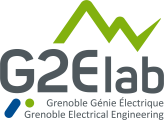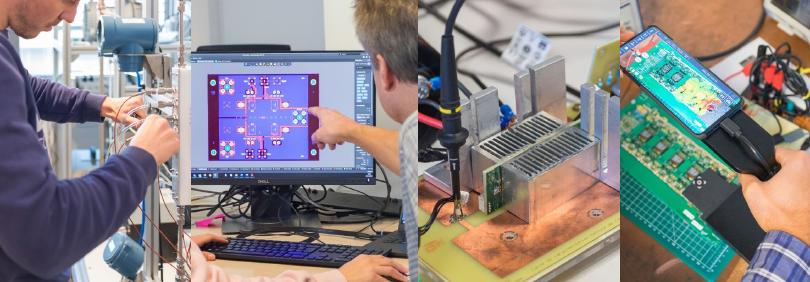The choice of a converter topology still relies on the expertise of the designer, and uses methodologies based on trial&error, simulations and prototyping. The power Electronics group aims proposing efficient design methodologies allowing the reduction of design time. Two different approaches are proposed:
1°) Design by optimization
2°) Automatic design from conversion standard cells
Design by optimization
Power electronics converters have to meet very precise, specifications, sometimes unreachable. The designer's experience is decisive in choosing a point in the space of solutions (topology, technological choices and first “acceptable” sizing choice) that will lead to a candidate topology, which will then have to be sized and optimized using successive simulations and often prototypes.
Early in the 2000s, we proposed a generic design-by-optimization methodology, formulating the problem as constrained optimization. Solving this problem makes it possible to obtain a theoretical optimum for the converter, to compare topologies or technologies fairly, or to analyze the impact of specifications on the converter. .

Example of a comparison of 75kW rated power inverter topologies based on Cost-Volume-Efficiency criteria (Meriem Ouzouigh thesis - CIFRE Schneider Electric)
Automatic design from conversion standard cells

1kW converter based on the association of Dual Active Bridge elementary cells (20V-20V-100W each).

Test bench to characterize the elementary cell in the voltage/current/temperature space
Lastest publications
A.Voldoire, JL.Schanen, JP.Ferrieux, B.Sarrazin, C.Gautier, "Predesign Methodology of Voltage Inverters using a Gradient-Based Optimization Algorithm", IEEE JESTPE (Journal of Emerging and Selected Topics in Power Electronics), vol. 9, no. 5, pp. 5895-5905, Oct. 2021, doi: https://10.1109/JESTPE.2021.3092576
M.Delhommais, T.Delaforge, JL.Schanen, F.Wurtz, C.Rigaud, "A Predesign Methodology for Power Electronics Based on Optimization and Continuous Models: Application to an Interleaved Buck Converter", MDPI Designs 2022, 6, 68. https://doi.org/10.3390/designs6040068
M. Tadbiri-Nooshabadi, J-L. Schanen, H. Iman-Eini and L. G. A. Rodrigues, "Optimization of EMI Filters of Multi-Level Flying Capacitor Boost Converter," in IEEE Transactions on Industry Applications, vol. 60, no. 5, pp. 7156-7169, Sept.-Oct. 2024, doi: https://10.1109/TIA.2024.3425796


